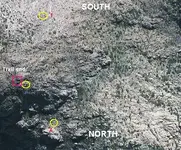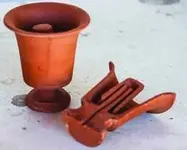cactusjumper
Gold Member
An educated guess? That mug being in such good shape must have had ceremonial significance, and so the likelihood of it being a rattle mug would be higher than usual, I'd think.
deducer,
You may be correct, but that picture is shown in a number of places and there is no mention of it being a rattle mug. If it were, it's hard to imagine it would not be noted.
The T shaped portal is known in many parts of the world and usually has "sacred" connotations. That is so much so, that the Hopi will not speak about it. The Maya believed it was a doorway to the Spirit World. It also has a sacred meaning to the Indians of India. The Apache may also hold it as sacred, as indicated by there T shaped necklaces.
No doubt it's a common form/symbol in many other places.
Take care,
Joe







